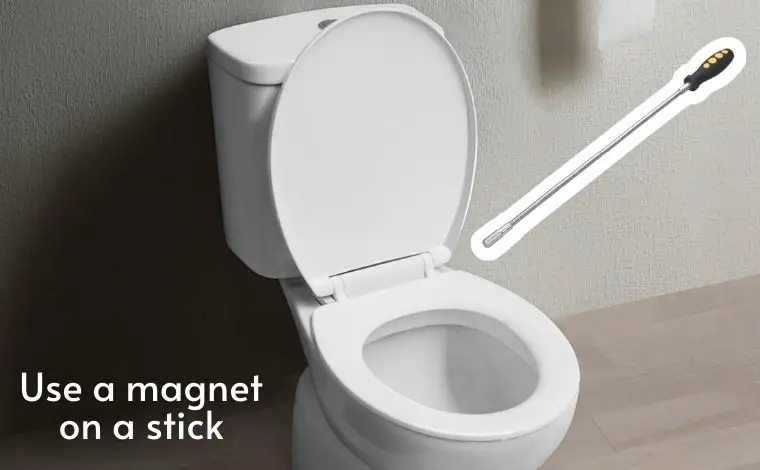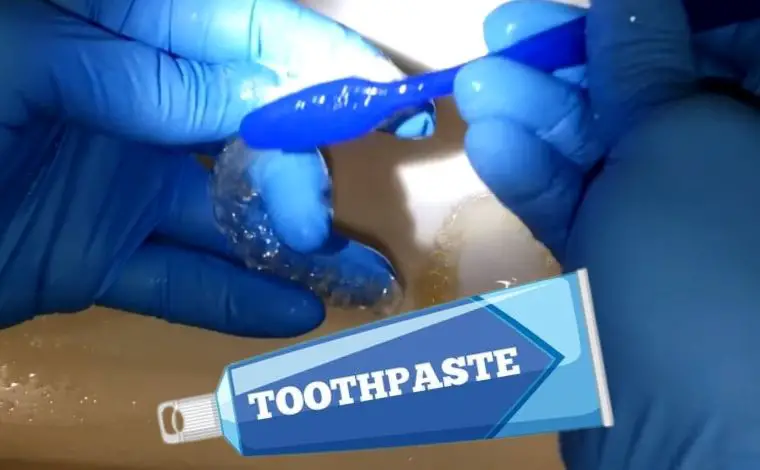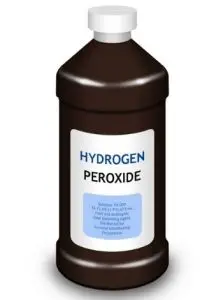Life has a way of surprising us with situations we never anticipate. One of the most stressful and unexpected moments is finding your dropped retainer in toilet water. At first, panic sets in—you think about the germs, the smell, and the fact that this device has to go back into your mouth. The very thought can make anyone feel sick.
But before you throw the retainer away or rush to order an expensive replacement, take a moment to breathe. The truth is, there are safe and effective solutions to deal with this problem. Orthodontists and dental experts agree that with the right cleaning methods, a retainer that has accidentally fallen into the toilet can often be disinfected and reused safely.
This article is designed to guide you through every step—from rescuing your retainer to disinfecting it properly. By following the proven methods here, you can protect your health while saving yourself the cost of buying a new device. Most importantly, you’ll learn how to keep calm and handle this situation wisely, instead of reacting out of fear.
A dropped retainer in toilet might sound like a nightmare, but with the right approach, it can simply be another problem solved.
The First Step – How to Safely Rescue a Retainer from the Toilet
When faced with a dropped retainer in toilet, the very first step is retrieval. The longer it sits in the bowl, the higher the chance of contamination and damage. Acting quickly—but safely—can make the difference between saving your retainer and losing it completely.
Stay Calm and Think Logically
It’s easy to panic and flush the toilet by reflex, but flushing is the worst thing you can do. Flushing may push the retainer deeper into the plumbing, making it nearly impossible to retrieve. Instead, pause, assess the situation, and choose the safest rescue method.
Effective Retrieval Methods
1. Use a Plunger
A plunger, often used to unclog toilets, can also create enough suction to lift small objects. Place the plunger over the drain, press down, and pull upward with controlled force. With luck, the suction may bring the retainer closer to the surface, allowing you to grab it.
2. Magnet on a Stick
If your retainer has metal components, a strong magnet attached to a stick can help. Lower the magnet into the bowl and carefully move it around until it attracts the retainer. This method avoids direct contact and works well for Hawley retainers with wires.

3. Protective Gloves
Sometimes, the simplest solution is also the most direct. Wearing thick disposable gloves, you can carefully retrieve the retainer by hand. It may feel unpleasant, but gloves provide a hygienic barrier between your skin and harmful toilet bacteria.
4. Avoid Bare Hands
Even if you’re tempted, never retrieve a retainer with bare hands. Toilets harbor dangerous pathogens, and direct contact can expose you to infections. Always use gloves, tools, or barriers.
Why Cleaning and Disinfecting is Essential
Rescuing your dropped retainer in toilet is only the beginning. The real challenge comes afterward—making sure it’s safe to wear again. A retainer spends long hours inside your mouth, in close contact with your teeth, gums, and saliva. If not cleaned properly, harmful germs from the toilet can easily transfer into your body and cause serious health problems.
The Hidden Dangers of a Dirty Retainer
Toilets are breeding grounds for bacteria, fungi, and viruses. Even if the water looks clear, it may contain microscopic organisms such as E. coli, Salmonella, and Staphylococcus. If these pathogens stick to your retainer and you wear it without disinfecting, you may risk:
- Stomach infections leading to diarrhea, nausea, or vomiting.
- Oral infections, such as gum disease or canker sores.
- Respiratory issues, since bacteria in the mouth can spread to the throat and lungs.
- Bad breath (halitosis), which is often caused by bacterial buildup.
Even under normal circumstances, retainers collect food particles and saliva that encourage bacterial growth. That’s why orthodontists recommend cleaning them daily. If a retainer has been exposed to toilet water, cleaning and disinfecting become non-negotiable.
Can You Still Use a Retainer After It Falls in the Toilet?
The answer depends on two factors: how quickly you retrieved it and how well you clean it afterward. Some orthodontists recommend replacing a dropped retainer in toilet to be on the safest side. However, if immediate replacement is not possible, disinfecting it with effective methods—like boiling, hydrogen peroxide, or denture tablets—can make it usable again.
Why Quick Action Matters
The longer your retainer stays in contaminated water, the more germs it collects and the harder they are to remove. Quick rescue followed by immediate disinfection minimizes the risk. Always treat your retainer as a health device, not just an accessory.
By understanding the risks and importance of cleaning, you’ll see why the next section—step-by-step cleaning methods—is so essential to making your retainer safe again.
Step-by-Step Cleaning Methods for a Dropped Retainer
Once you’ve rescued your dropped retainer in toilet, the most critical task is disinfecting it thoroughly before wearing it again. This isn’t just about rinsing—it’s about killing harmful bacteria and ensuring it’s safe to return to your mouth. Below are the most effective and proven cleaning methods.
1. Boiling Water
Boiling is one of the oldest and most trusted methods for killing bacteria. Place a pot of water on the stove and bring it to a boil. Drop your retainer in for 10–15 minutes. This destroys most harmful microorganisms.
- Best for: Hawley retainers with metal wires.
- Warning: Clear plastic retainers (like Essix) may warp under high heat. Always check with your orthodontist first.
2. Brushing with Toothpaste
After retrieving your dropped retainer in toilet, scrubbing with toothpaste is a simple yet powerful step. Use a soft-bristled toothbrush and a non-abrasive toothpaste. Gently brush every corner of the retainer for at least two minutes.

- Avoid: Whitening toothpaste, which can damage plastics.
- Tip: Rinse thoroughly with lukewarm water afterward.
 3. Hydrogen Peroxide Solution
3. Hydrogen Peroxide Solution
Hydrogen peroxide is an excellent disinfectant. Mix equal parts of 3% hydrogen peroxide and water, soak your retainer for 15–20 minutes, then rinse thoroughly.
- Pro tip: This method not only disinfects but also removes stains.
- Safety note: Do not use concentrated peroxide directly—it may damage the retainer and irritate your mouth.
4. Baking Soda and Vinegar Soak
This natural method is highly effective against bacteria and odors. Mix three spoonfuls of baking soda with a half cup of white vinegar and warm water. Place the retainer in the fizzing solution for about 15 minutes.
- Benefit: Removes both bacteria and stubborn odors.
- Caution: Prolonged soaking may slightly alter plastic retainers, so stick to recommended time.
5. Denture Cleaning Tablets
Denture tablets are specially designed for cleaning dental appliances. Drop one into a glass of warm water, place your retainer inside, and let it soak for 10–15 minutes.
- Why it works: The effervescent action removes germs, stains, and odors.
- Tip: Follow package instructions closely for best results.
6. Dishwasher Cleaning
If no other option is available, you can use a dishwasher. Place your retainer inside a secure retainer-safe case and put it on the top rack. Use a gentle wash cycle without heated drying.
- Best for: Heat-resistant retainers only.
- Warning: Clear plastic retainers may warp—avoid this method unless you’re sure.
Choosing the Best Method
Not every cleaning method works for every type of retainer. For example:
- Hawley retainers (metal + acrylic) can tolerate boiling and peroxide.
- Essix or clear plastic retainers should avoid high heat and strong chemicals.
If unsure, call your orthodontist for guidance before using aggressive cleaning methods.
By applying one or more of these cleaning methods, you can transform your dropped retainer in toilet into a safe, disinfected device that’s ready for use again.
Preventing Future Accidents and Practicing Good Retainer Hygiene
Cleaning a dropped retainer in toilet is stressful, time-consuming, and something no one wants to repeat. The good news is that with a few careful habits, you can dramatically reduce the chances of this happening again while also keeping your retainer clean and safe for daily use.
Simple Ways to Prevent Dropping Your Retainer in the Toilet
1. Always Use a Retainer Case
The easiest and most effective habit is keeping your retainer in its case whenever it’s not in your mouth. Many accidents happen because people set their retainer on the bathroom counter or sink while brushing their teeth. From there, it’s all too easy for it to slip and end up in the toilet. A sturdy case prevents this.
2. Remove Your Retainer in a Safe Place
Instead of taking your retainer out in the bathroom, remove it in your bedroom, kitchen, or another clean area. This eliminates the risk of dropping it in the sink or toilet altogether.
3. Don’t Balance It on Tissues or Paper Towels
Some people place their retainer on a tissue while brushing their teeth. Unfortunately, this often leads to two problems: it can be accidentally thrown away with the tissue, or it can slide into the toilet. Always use a case instead.
4. Carry a Backup Retainer (If Possible)
Some orthodontists provide backup retainers, or you can request an extra set. While this won’t stop accidents, it ensures you won’t be left without a retainer if one is lost or contaminated beyond use.
5. Keep Children and Pets Away
Retainers are small and often attract curiosity. Dogs, in particular, love to chew on them, and children may drop them in places like the toilet out of play. Store your retainer safely out of reach.
Practicing Proper Daily Retainer Hygiene
Even if you never experience a dropped retainer in toilet, it’s still important to clean your retainer daily. Bacteria, saliva, and food particles accumulate on it quickly, and poor hygiene can cause bad breath or oral health issues.
- Clean once a day: Use mild soap or retainer-cleaning solutions to prevent buildup.
- Avoid hot water for plastic retainers: This prevents warping.
- Brush gently: Use a soft toothbrush dedicated to cleaning the retainer, not the one you use for your teeth.
- Store in a ventilated case: This prevents moisture buildup, which can encourage bacterial growth.
- Replace when needed: Over time, retainers wear out. Ask your orthodontist if yours is due for replacement.
Frequently Asked Questions
Q1: What happens if I wear a dirty retainer?
Wearing a contaminated retainer can introduce harmful bacteria into your mouth, leading to infections, gum irritation, or stomach illnesses. If your retainer has fallen in the toilet and you don’t clean it properly, you risk exposing your body to pathogens like E. coli.
Q2: Can a retainer hold bacteria even after cleaning?
Yes, retainers can still harbor some bacteria even after regular cleaning. That’s why consistent daily hygiene is crucial. However, when a dropped retainer in toilet is disinfected using strong methods—such as hydrogen peroxide, boiling, or denture tablets—the bacteria level can be reduced to safe levels.
Q3: Should I replace a retainer that fell into the toilet?
Ideally, yes. If you can afford a replacement, that’s the safest choice. However, with thorough disinfection, many orthodontists agree that a rescued retainer can be reused safely until you’re able to replace it.
Q4: Should I wear my retainer at night?
Follow your orthodontist’s instructions. Some retainers must be worn during the day, while others are designed for nighttime use. Consistency is key in maintaining the results of your orthodontic treatment.
Q5: How often should I clean my retainer even if it hasn’t been dropped?
Daily cleaning is recommended. A retainer spends hours in your mouth, where it collects bacteria, food particles, and plaque. Proper cleaning prevents infections and keeps your breath fresh.
Final Thoughts
Dropping your retainer in the toilet may feel like a disaster, but it doesn’t have to derail your orthodontic journey. With quick rescue, careful cleaning, and smart prevention habits, a dropped retainer in toilet can be made safe to use again.
Remember these key points:
- Retrieve it safely without flushing.
- Use proven cleaning methods like boiling, hydrogen peroxide, or denture tablets.
- Maintain strong daily hygiene habits to prevent future risks.
- If possible, replace the retainer for peace of mind, but if not, thorough disinfection can make it usable.
Your retainer is more than just a piece of plastic or wire—it’s a vital part of protecting the investment you made in your smile. Treat it with care, and even an unpleasant accident like a dropped retainer in toilet won’t stand in the way of your oral health and confidence.
We are really lucky to have a hard-working, multi-skilled plumber on our team. Collin D. Gallegos, a professional plumber who has worked with us since 2012, is an expert in vent, septic, and drainage systems. He is a Certified Master Plumber and has worked on various commercial plumbing projects. He usually helps our readers resolve plumbing and pipe-related issues with a proper DIY troubleshooting and repair guide.
Please check whether your retainer can be boiled before doing so because if they are plastic they will soften and become misshapen and you will have to replace them!!